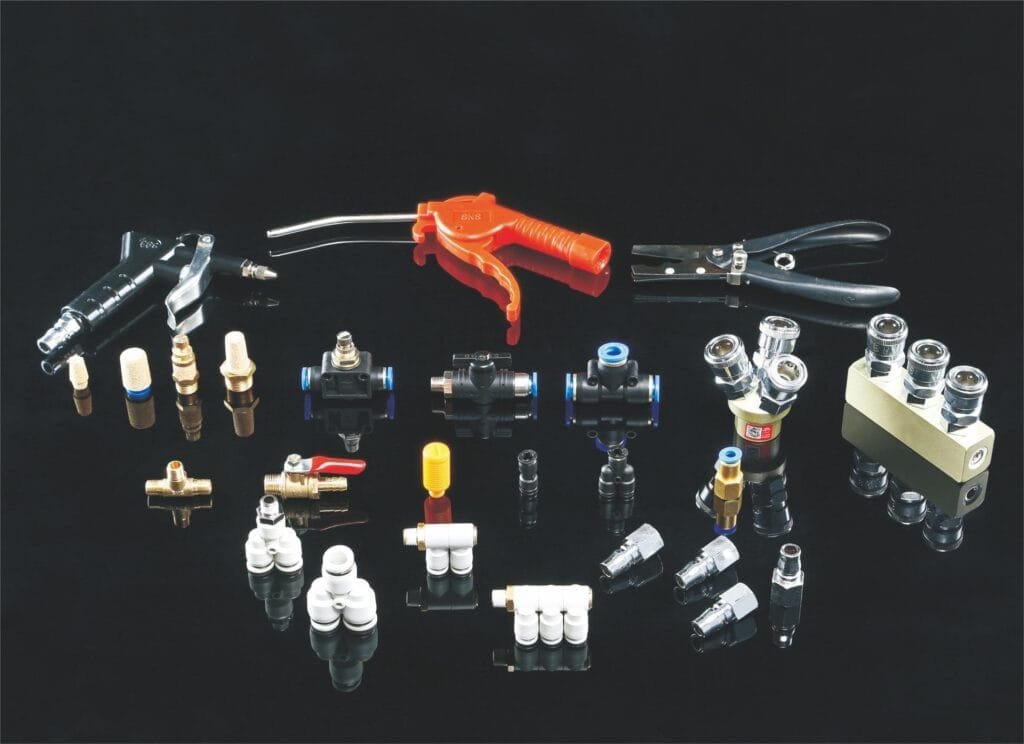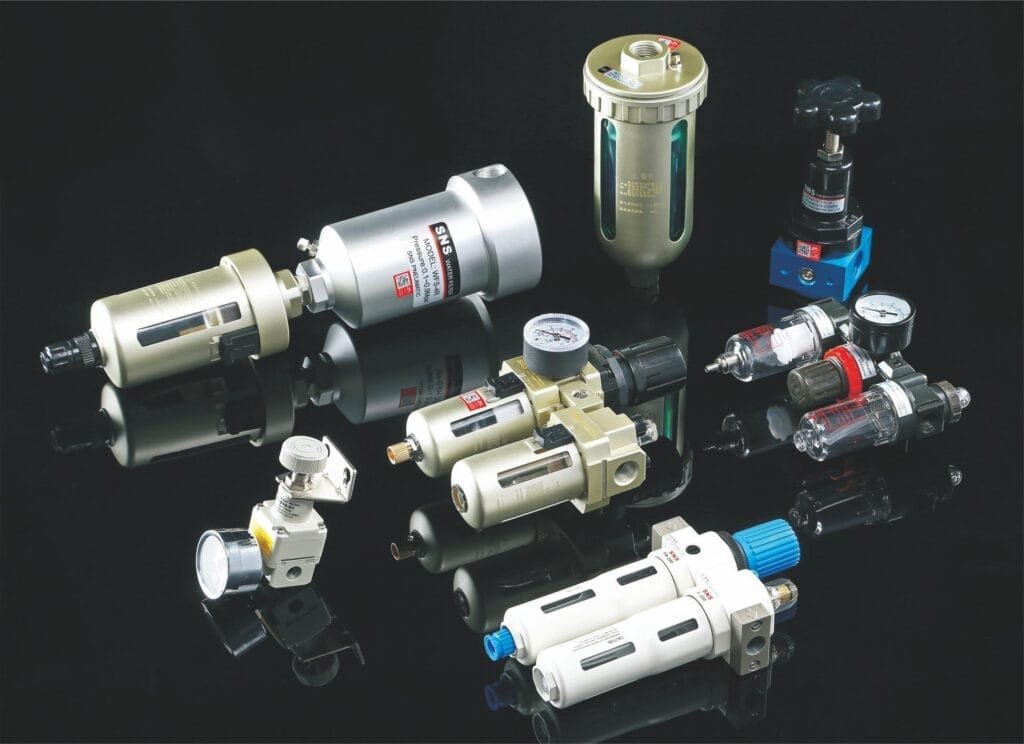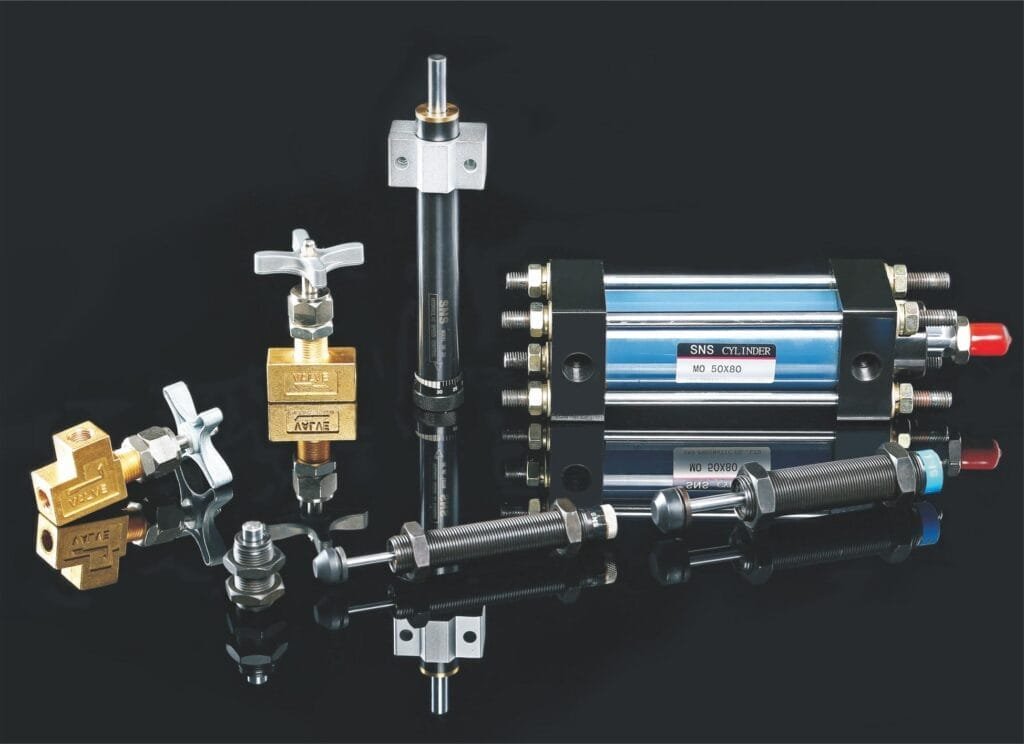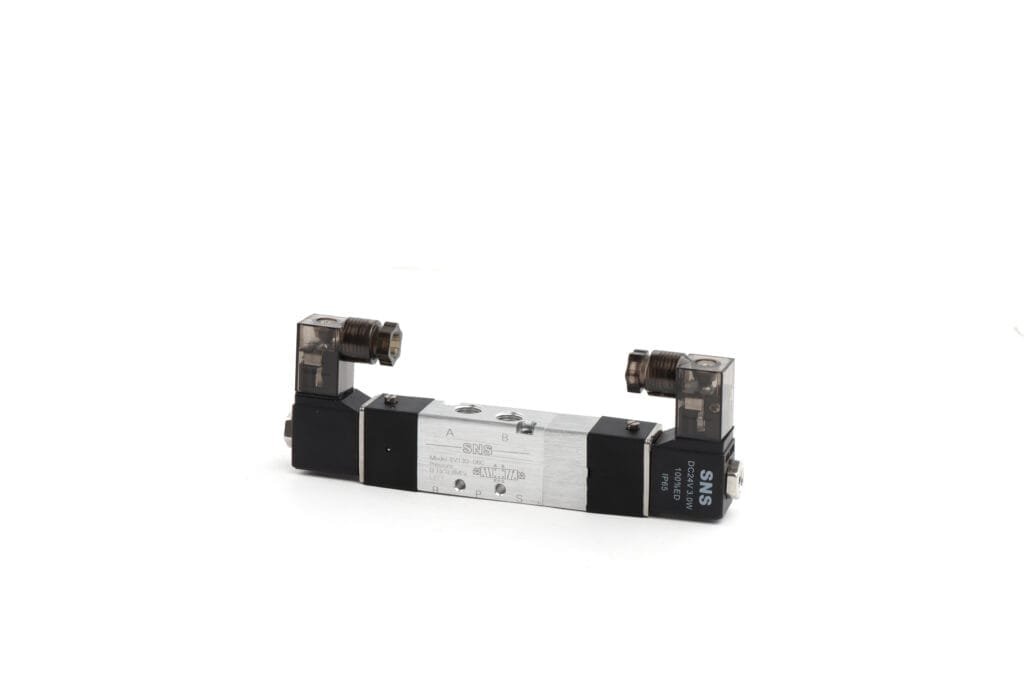What Is Telescopic Cylinder
A telescopic cylinder is a specialized hydraulic or pneumatic cylinder designed with multiple stages that extend sequentially, allowing for a very long output stroke from a compact retracted size. This design enables machines and applications to achieve significant linear motion within limited spaces.
Telescopic cylinders play a critical role in numerous industrial and mobile applications, providing unique solutions for lifting, pushing, and pulling motions where space constraints exist. Understanding their design, functionality, and advantages is essential for engineers and professionals dealing with machinery requiring extensive linear movement in confined areas.
What Is Telescopic Cylinder
A telescopic cylinder is a hydraulic or pneumatic cylinder that extends in stages, each one smaller in diameter than the previous. This design allows for a longer extension than would be possible with a single-stage cylinder of identical collapsed size. They consist of multiple cylinders nested within each other, leading to their alternate name: multi-stage cylinders.
Telescopic cylinders can retract into a very compact size considering their extendable length. This makes them highly suitable for applications where space is limited but a long actuation stroke is required. Their operation involves sequential extension or retraction of each stage, starting from the largest diameter section.
What Are Telescopic Cylinders Used For
Telescopic cylinders serve a broad range of industrial and mobile applications. They excel in situations requiring a long stroke while having limited space to accommodate the fully extended length of a conventional cylinder. These cylinders are commonly found in construction machinery such as dump trucks, refuse collection vehicles, and agricultural equipment where adjusting or moving heavy loads is necessary. They play critical roles in material handling equipment, facilitating the lifting and lowering of platforms or loads in a controlled manner. Additionally, telescopic cylinders are essential components in manufacturing environments, especially in automation systems where precise movement and positioning of objects are required.
Their unique design allows for significantly longer strokes than those achievable by standard hydraulic or pneumatic cylinders within the same footprint. This makes telescopic cylinders ideal for applications needing extensive reach but restricted by physical constraints or efficiency demands. Industries such as mining and forestry also utilize these cylinders for their heavy machinery due to their robustness and reliability under harsh working conditions.

How Does Telescopic Cylinders Work
Telescopic cylinders function by sequentially extending and retracting multiple stages or sleeves. These stages, typically made of steel, slide inside each other. Hydraulic fluid pushes these stages to extend or retract. Each stage extends one after the other, starting from the largest sleeve. This design allows for a long extension from a compact form.
The process begins when hydraulic fluid enters through a port at the cylinder’s base. The pressure of the fluid acts on the base of the innermost sleeve, causing it to extend. As this stage reaches its full extension, the fluid’s pressure then moves to act on the next stage, extending it in turn. This sequence continues until all stages are fully extended.
Retraction occurs in reverse order. Hydraulic fluid exits the cylinder, relieving pressure on the sleeves. Springs or other mechanical means may assist in retracting the sleeves into their original positions.
Telescopic cylinders can be single-acting or double-acting. Single-acting cylinders rely on hydraulic pressure to extend and an external force, like gravity or a spring, for retraction. Double-acting cylinders use hydraulic power for both extension and retraction phases.
Each stage of a telescopic cylinder has seals to prevent leaks of hydraulic fluid between the stages and outside the cylinder. These seals are critical for efficient operation and preventing contamination.
Control is achieved through valves that regulate hydraulic fluid flow into and out of the cylinder. The design enables precise control over speed, force, and position of each stage during extension and retraction.
Components Of A Telescopic Cylinder
Telescopic cylinders consist of multiple stages or sleeves. Each stage fits inside the previous one, making it compact when fully retracted. The main components are the base, stages, piston rod, seals, and bearings.
Base
The foundation of the telescopic cylinder, which houses the entire mechanism and provides structural support for the operation of the cylinder.
Stages
Comprising multiple sleeves or stages that fit within each other, allowing the cylinder to be compact when retracted and extend to a greater length. The first stage is known as the barrel, with each subsequent stage decreasing in size to slide into the one before it.
Piston Rods
Connected to each stage except for the last, piston rods move (extend or retract) in response to hydraulic or pneumatic pressure applied within the cylinder.
Seals
Critical for preventing fluid leakage between stages or to the exterior, ensuring the pressure is maintained for efficient operation and preventing contamination.
Bearings
Serve to reduce friction between the moving parts of the telescopic cylinder, mitigating wear and maintaining operational efficiency throughout extend and retract cycles.
Benefits Of Telescopic Cylinders
Space Efficiency
Telescopic cylinders are highly space-efficient, capable of extending to long lengths while remaining compact when retracted.
Versatility
Their adaptability and strength make telescopic cylinders versatile tools across various industries, including agriculture, construction, and manufacturing, where they are essential for a wide range of tasks.
Superior Stroke Length
Compared to single-stage cylinders, telescopic cylinders offer a superior stroke length, allowing for greater movement distances within the same base size.
Low Maintenance
With a simpler design and fewer moving parts, these cylinders are less prone to wear and tear, necessitating minimal maintenance, thereby reducing downtime and leading to cost savings over time.
Straightforward Operation
The operation of telescopic cylinders is straightforward, requiring no extensive training or intricate mechanisms, which simplifies usage and minimizes the potential for operational errors.
Cost-Effective
Telescopic cylinders are cost-effective solutions, offering significant value over their lifespan due to their durability, minimal maintenance requirements, and versatile application across industries.
Enhanced Load Handling
Their design enables smooth extension and retraction under heavy loads, improving material handling processes and efficiency in various tasks.
Integrable Safety Features
Safety features like load holding valves or safety locks can be integrated to prevent unexpected movements or collapses under load, enhancing the operational safety of telescopic cylinders.

3 Types Of Telescopic Cylinders
Telescopic cylinders come in three main types: single-acting, double-acting, and a combination of both.
Single-Acting Telescopic Cylinders
Single-acting telescopic cylinders extend using hydraulic pressure but retract via an external force. This type of cylinder is simple in design. They require fluid to move in one direction only. The retraction happens through gravity or a mechanical pull.
These cylinders are known for their straightforward operation. A singular hydraulic channel fills with fluid, causing the sections to extend step by step. Each section, or stage, extends out from the smallest to largest. When extending, the pressure acts on the base of each section.
The main advantage is efficiency in applications requiring a pushing motion without needing a pull-back force from hydraulics. They take up less space compared to double-acting cylinders when retracted.
However, they depend heavily on external forces for retraction. This dependency limits their use in certain applications. For instance, if gravity cannot return the cylinder to its original state due to orientation or counterweights are impractical, single-acting telescopic cylinders might not be suitable.
Double-Acting Telescopic Cylinders
Double-acting telescopic cylinders differ from their single-acting counterparts. They can extend and retract using hydraulic pressure. This feature marks a key distinction. The cylinder extends by pumping hydraulic fluid into the base chamber. To retract, fluid shifts to the rod end chamber.
These cylinders handle heavy loads better. They offer precise control over movement. Both extension and retraction are smooth, thanks to balanced pressure.
Each stage of a double-acting cylinder operates independently but in concert. The design allows for varied stroke lengths and force applications. This adaptability makes them suitable for complex tasks.
Single-Acting and Double-Acting Combination
Telescopic cylinders with a combination of single-acting and double-acting segments are complex but versatile. This type features the simplicity of single-acting cylinders integrated with the control of double-acting ones. Each stage can be extended using hydraulic pressure but retracts differently based on its design, single or double-acting.
Single-acting stages rely on gravity or external forces for retraction. In contrast, double-acting stages use hydraulic power both ways. This combination allows precise movement control in applications requiring varied force levels during extension and retraction.
The hybrid design brings together the benefits of both types. It offers the efficiency of single-acting cylinders in terms of energy and cost, while also providing the advanced control capabilities of double-acting cylinders.
Application often dictates configuration. For lightweight materials handling, a predominantly single-acting setup might suffice. Heavier, more complex loads may need the nuanced control that double-action provides at specific stages.
Applications Of Telescopic Cylinders
Construction Equipment
Telescopic cylinders are critical in construction machinery like dump trucks and excavators, where they enable lifting and precise movement crucial for completing construction tasks efficiently.
Agriculture Machinery
In agriculture, these cylinders are found in harvesting equipment and loaders, enhancing efficiency and reducing the need for manual labor by facilitating easier and faster processes.
Transportation
The transportation sector benefits from telescopic cylinders in trailer manufacturing and garbage truck operations, providing essential lifting capabilities that are space-efficient and suitable for handling heavy loads.
Manufacturing Plants
Within manufacturing settings, telescopic cylinders contribute to assembly lines and material handling systems, streamlining operations by improving productivity and facilitating smooth workflow processes.
Emergency Services
For emergency and rescue operations, telescopic cylinders are utilized in firefighting equipment like ladder trucks, allowing for safe and expedient access to high places during critical rescue missions.

Factors Affecting The Performance Of Telescopic Cylinders
Telescopic cylinders perform various functions. Their performance depends on several factors: load, pressure, stroke length, and more. Understanding these factors is crucial.
Load
The performance of telescopic cylinders is significantly affected by the load they carry. Heavier loads demand more force for movement, thus placing additional stress on the cylinder’s components, potentially impacting durability and operational efficiency.
Pressure
The pressure inside the cylinder is essential for its operation, propelling the movement of the stages. Inadequate or excessive pressure levels can lead to suboptimal performance and even cause damage to the system.
Stroke Length
The stroke length, which quantifies the cylinder’s extension or retraction capability, must be engineered with precision. Longer strokes require careful design to ensure stability, efficiency, and performance across the cylinder’s range of operation.
Temperature
Temperature extremes can compromise seal integrity and alter fluid viscosity, thereby affecting the telescopic cylinder’s performance. Proper material and fluid selection are vital to mitigate these effects.
Material Choice
The materials used in constructing telescopic cylinders affect their durability and functionality. Selection should consider the operational environment and the demands placed on the cylinder to ensure optimal performance and longevity.
Maintenance Frequency
Regular maintenance is crucial for maintaining the longevity and reliability of telescopic cylinders. Routine checks help identify and address potential issues before they impact performance.
Installation Accuracy
Correct installation is imperative to ensure the telescopic cylinder operates efficiently. Misalignment from incorrect installation can lead to increased wear and operational problems.
Fluid Type
The type of fluid used influences the functionality of telescopic cylinders, affecting seal life and performance, particularly under varying temperature and pressure conditions.
Operational Speed
The speed at which a telescopic cylinder extends and retracts can affect its effectiveness and influence the rate of wear over time, requiring careful consideration in system design.
What Is The Difference Between A Telescopic Cylinder And A Normal Cylinder?
Design and Function
- Telescopic Cylinder: This type of cylinder is multi-staged, encompassing two or more cylinder sets or ‘stages’ that extend out sequentially. This allows a much longer stroke while maintaining a compact retracted size.
- Normal Cylinder: Contrastingly, a normal cylinder has a single stage with one piston rod and cylinder, operating in a simple, linear fashion.
Extension Capabilities
- Telescopic Cylinder: They can achieve significantly larger extension lengths relative to their retracted size, making them ideal for applications with space limitations.
- Normal Cylinder: These cylinders, on the contrary, have not as much flexibility with extension lengths relative to their closed size.
Operational Complexity
- Telescopic Cylinder: They can be more complex operationally due to their multiple stages requiring precise control mechanisms.
- Normal Cylinder: These cylinders operate more straightforwardly, having a single movement controlled directly by hydraulic or pneumatic pressure.
Physical Construction
- Telescopic Cylinder: These cylinders possess nested tubes that slide into each other when retracted.
- Normal Cylinder: Unlike telescopic cylinders, normal cylinders consist of a single tube housing the piston rod.
Application Suitability
- Telescopic Cylinder: Due to their ability to provide high lift in limited space, telescopic cylinders are frequently used in lifting applications such as dump trucks and forklifts.
- Normal Cylinder: Normal cylinders, meanwhile, are widely used across various industrial fields where direct, linear force is applied without significant space restrictions.
Are There Any Safety Considerations Specific To Telescopic Cylinders?
- Routine Inspections: Before use, it’s crucial to check for leaks, damage, or wear, with particular attention to seals and joints, to prevent accidents.
- Proper Usage: Operators must be trained on the specific telescopic cylinder they are using, understanding load limits and avoiding off-center loads that can cause uneven extension and potential system failure.
- Adherence to Manufacturer Guidelines: Ensuring the cylinder is used within its intended parameters is essential to minimize risk. Overloading or using a cylinder for an unintended application increases hazards.
- Stabilized Operations Under Load: Due to the extended length of telescopic cylinders when in use compared to their retracted size, it’s vital to ensure stabilized operations under load and careful handling during movement.
- Clearance Maintenance: When extending or retracting a telescopic cylinder, it’s important to maintain clearances around the equipment to prevent accidental injury to operators or bystanders.
- Consideration of Environmental Conditions: The operating environment’s impact, such as extreme temperatures or corrosive substances, must be considered to prevent premature wear or failure.

What Are The Most Common Causes Of Failure In Telescopic Cylinders?
Poor Maintenance
Lack of regular inspections and maintenance leads to wear and tear, reducing the telescopic cylinder’s lifespan by failing to address leaks, erosion, and other issues promptly.
Contamination
Entry of external debris into the system or contamination of the hydraulic fluid can obstruct fluid flow and damage components, adversely affecting the cylinder’s performance.
Incorrect Installation
Improper alignment during installation places undue stress on parts of the cylinder, resulting in uneven wear or, in severe cases, catastrophic failure.
Excessive Load
Subjecting the cylinder to loads beyond its designed capacity strains all parts, potentially leading to mechanical failure or compromised seal integrity, which in turn causes leaks.
Temperature Fluctuations
Extreme temperatures can change the viscosity of the hydraulic fluid or damage the seals, which impacts the operational efficiency of telescopic cylinders.
Design Flaws
Inherent weaknesses due to design flaws or the use of substandard materials during production can cause failures under typical operational conditions.
Mechanical Damage
External forces, whether from operational mishaps or accidents, can cause immediate failure or gradually weaken the cylinder’s structure over time.
Corrosion
Exposure to moisture or corrosive substances in harsh environments contributes significantly to failures, especially affecting cylinders not designed with corrosion-resistant materials.
Insufficient Lubrication
Without proper lubrication, increased friction among moving parts accelerates wear and, in some cases, can cause components to seize.
Human Error
Mistakes in handling, operating, or maintaining telescopic cylinders — due to inadequate training or negligence — can lead to premature failure.
In Conclusion
In summary, a telescopic cylinder is an essential component in various mechanical and industrial applications, offering extended reach and power within a compact design.
To learn more about how these innovative hydraulic solutions can optimize your projects or to explore our range of telescopic cylinders tailored to meet your specific needs, we invite you to get in touch with our team today. Discover the advantages of integrating advanced telescopic technology into your operations for enhanced performance and reliability.





